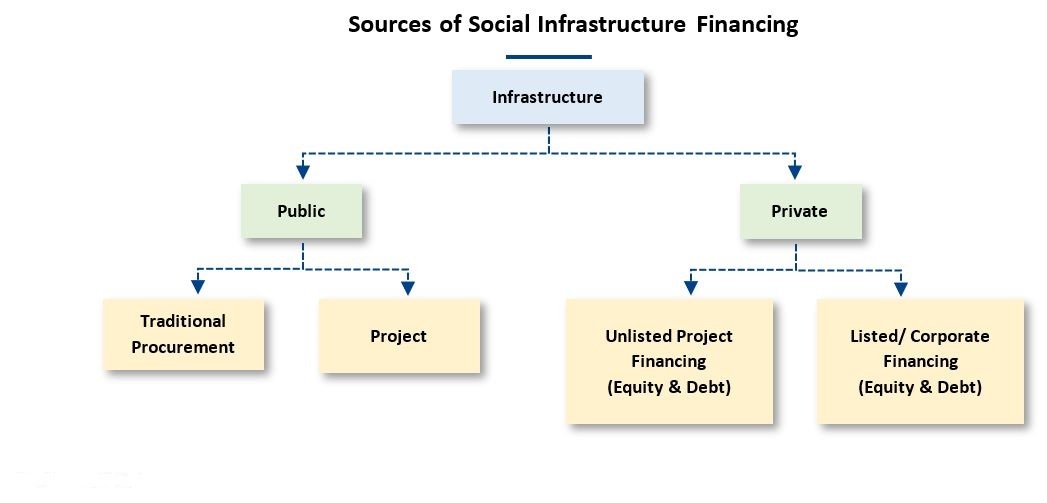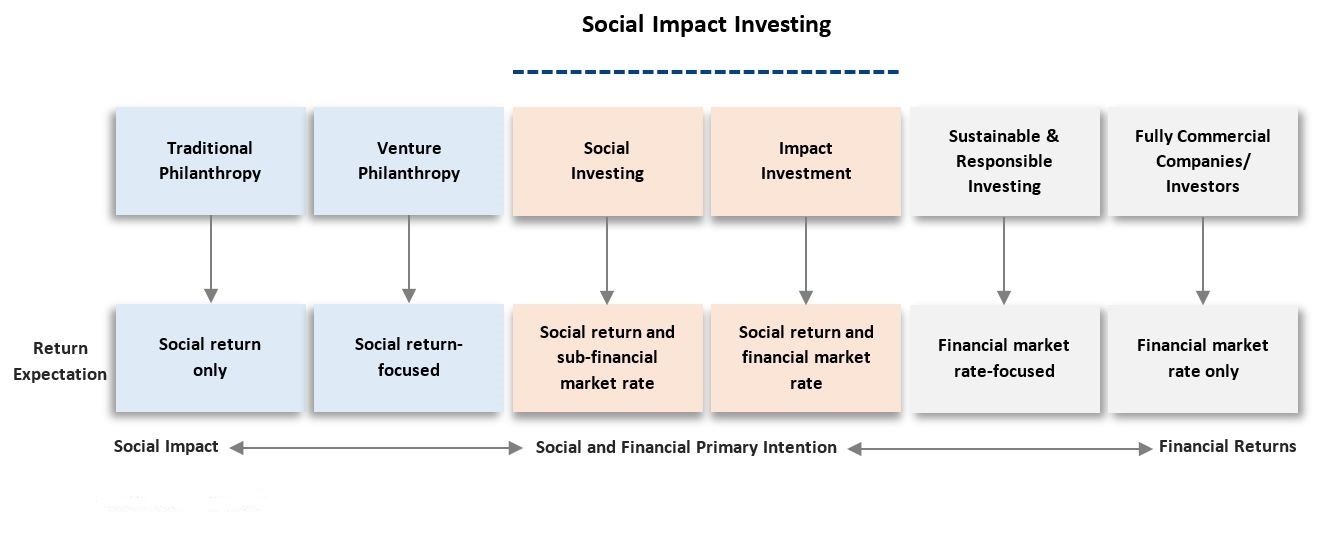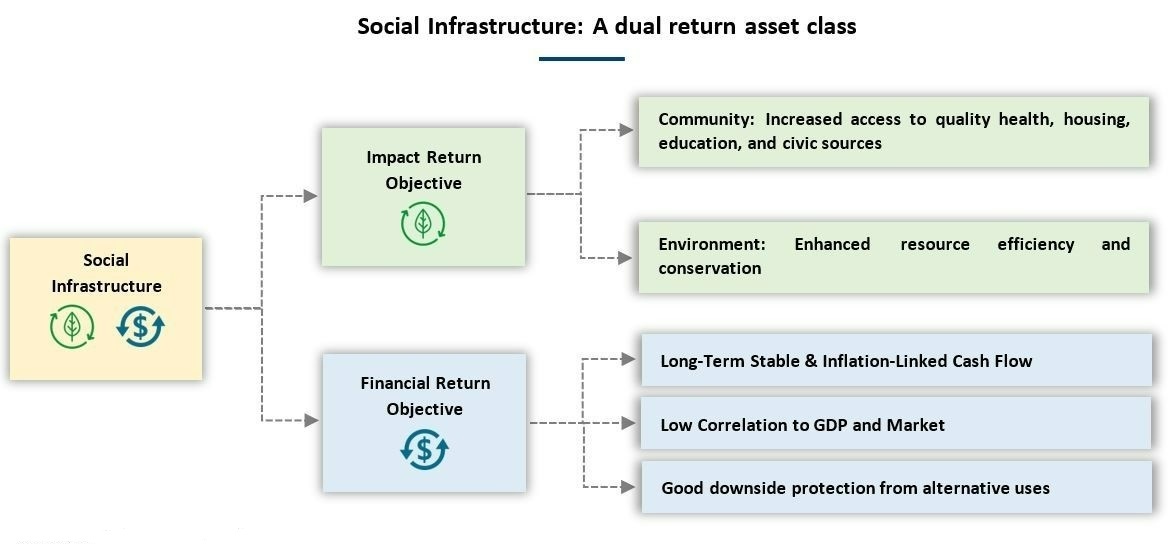Impact Investing in Real Estate
Published on 21 Jan, 2022

Amid the requirement for a robust social infrastructure in the wake of the pandemic, social impact investing is increasingly attracting attention. While issues such as climate change continue to pique the interest of investors, social investing is also gaining momentum. Being less vulnerable to market dynamics and falling in the category of sustainable investments, social impact investing may soon feature as a product in the portfolios of investors.
COVID-19 exposed a lot of systemic cracks in infrastructure, indicating the overall inability to deal with a global crisis of that level. One such issue is the absence of social infrastructure worldwide, which comprises health care, education facilities and affordable housing. With many countries lacking these necessary facilities, the level of the disaster, in terms of sickness and mortality rates, was shockingly high.
A look back at the last decade, investments in the social infrastructure domain in several large OECD countries declined notably in 2010s.
Source: OECD, Franklin Templeton, Aranca Analysis
Note: Australia did not report numbers for 2017-2018; Japan did not report numbers for 2016-2018
Inadequate real estate infrastructure was an issue before COVID-19 as well; the pandemic only exacerbated the challenge, showing more than ever the need to increase investment in such areas. Social infrastructure is not just indispensable but a large-scale opportunity too for both institutional and private investors. While returns are competitive, there is scope to align the portfolios with the ESG norms, implying relevance from the sustainability perspective.
So far, government spending as well as investments in social infrastructure, even amid the pandemic, have been far short of sufficient in most nations. This underscores the importance of increasing private sector participation in this segment.
As the world transitions from the thinking-out-loud phase of ESG commitments, to following up with action and data, social infrastructure is emerging as an attractive alternative for private investors. Financing methods outside the traditional public sphere can significantly transform the sector.

Impact investing is about directing capital and deploying the same sustainably in organizations that generate social and/or environmental benefits. The outcome for the society is positive, besides of course the strong returns on investment. Intentionality, measurability, and additionality of funds are the main components of impact investing. It covers all asset classes, the most used being private equity, private debt and real asset instruments.

One of the biggest themes under impact investing is climate change. Another emerging aspect is the social angle, with quality healthcare, education and affordable housing on top of the minds of investors. The rationale for investing is typically driven by what asset owners focus on and engage in. Impact investing differs from other forms of investing such as environmental, social, and governance (ESG) and socially responsible investing (SRI). ESG focuses on how the company’s environmental, social, and governance practices impact society, positively and negatively. Socially responsible investing entails actively selecting or removing investments based on specific values, standards, and ethical guidelines. For instance, an investment fund may choose to avoid investing in companies that operate in addictive businesses such as alcohol, tobacco, and casino/gambling. Impact investing pays importance to the measurable societal and/or environmental benefits generated from investors’ capital alongside financial returns.
Social infrastructure investments are attractive to long-term investors due to the scope for dual return: a market-rate financial return that comes from long-term inflation-linked lease contracts; and impact return, which is the quantifiable mechanism for the improvement achieved in the quality of life. Social infrastructure investments often give predictable, steady returns, and are less exposed to market risks. Cash flows are usually guaranteed to a large extent by contract. These contracts are long term in nature and provide owners predictable, steady, and stable cash flows, thus providing a sense of security on income. Social infrastructure investments offer minimal exposure to economic cycles as well, as they are deemed essential and operate throughout.

While the pandemic did send major parts of the world into lockdowns, it also highlighted the importance of resilient and sustainable healthcare and educational systems. Social infrastructure is vital to the health, robustness and vibrancy of communities, and the crisis has rendered these assets indispensable. Consequently, the demand for capital to be deployed toward impact investing is more than ever before, which has increased the perceived value of sustainable assets.
As much as the pandemic has slowed economies across the globe, including real estate activity, the flip side of it is the wake-up call for investors to prioritize investments in sustainable infrastructure and assets.
